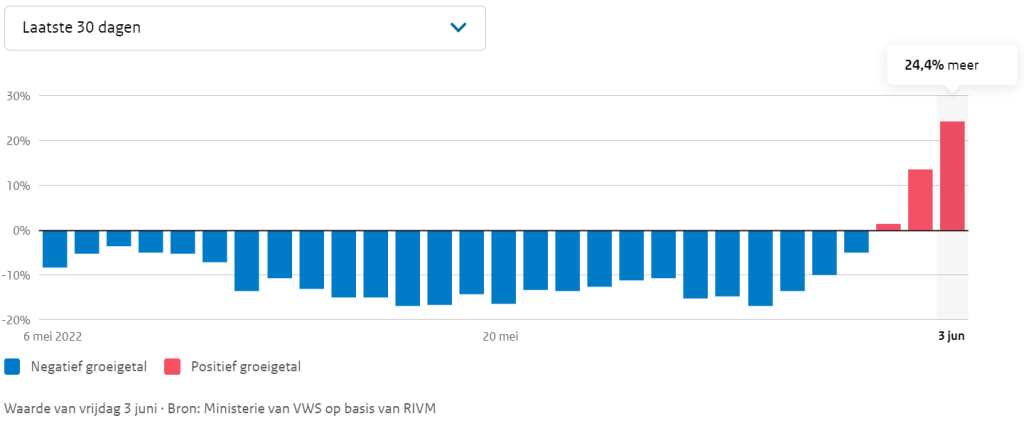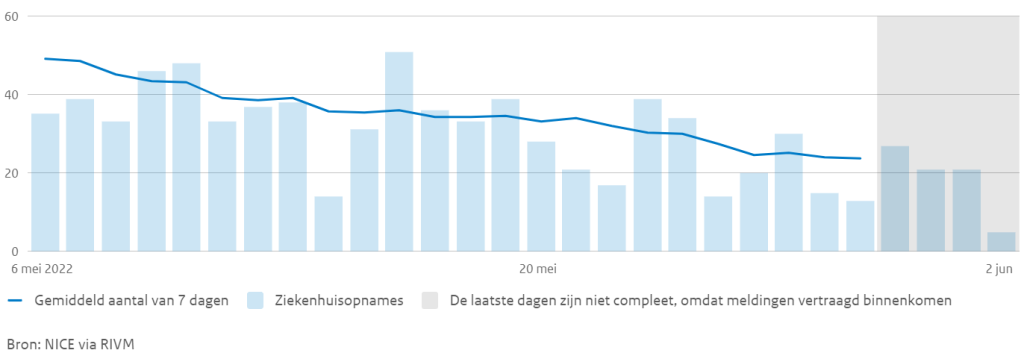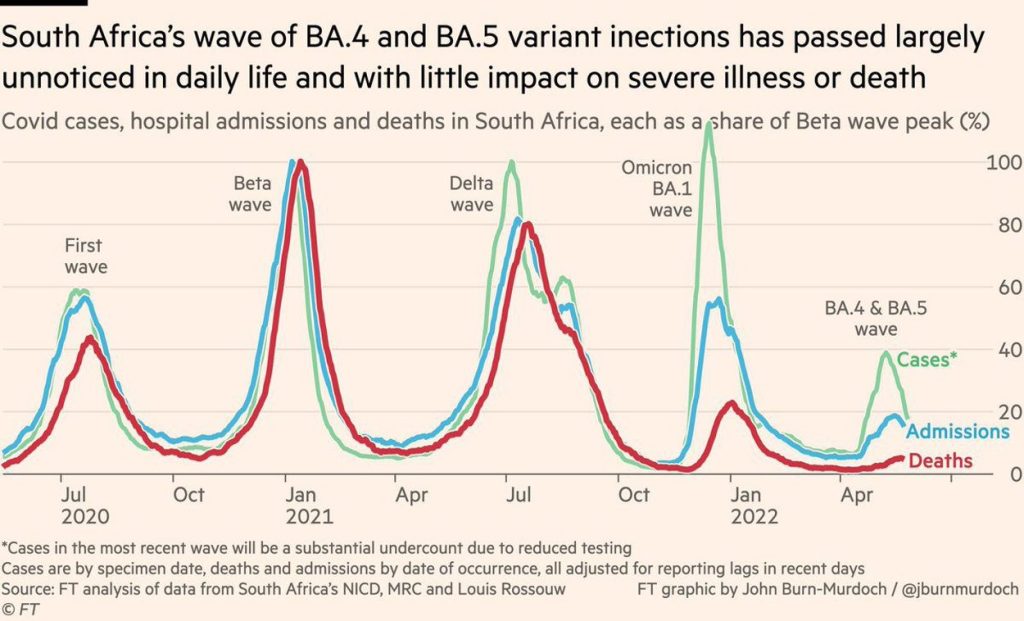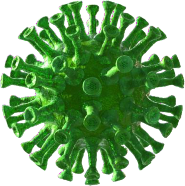300 wetenschappers hebben een brief gepubliceerd, waarin ze een oproep doen om stelling te nemen tegen politici die “ongefundeerde beschuldigingen en verdachtmakingen tegen wetenschappers uiten”. Afgezien van het taalgebruik, hebben deze politici een punt? Spreekt de minister wel namens “de wetenschap”?
Een blog van Herman Steigstra en Anton Theunissen.
Zonder dat Ernst Kuipers zich er waarschijnlijk van bewust was, schetste hij donderdagavond bij Beau in enkele minuten (vanaf minuut 21) de controverse tussen wetenschap en politiek. We geven eerst even een korte samenvatting van zijn uitspraken:
“Tot januari 2022: 3 miljoen besmettingen in 1,5 jaar. Vanaf januari in 4 stappen maatregelen opgeheven en dat betekende in 3 maanden tijd nog eens 4,7 miljoen besmettingen extra. Niet iedereen was getest dus “niet irreëel aan te nemen dat 6 miljoen besmet zijn geweest”. Het is verstandig aan te nemen dat in het najaar virus weer opkomt. We moeten rekening houden met een veelvoud daarvan: 10 miljoen in 7 maanden vanaf september. Daarom blijft RIVM/GGD zicht houden op het virus.
Then we have to ask ourselves how well the vaccines nog werken. Dus: opnieuw vaccin aanbieden deze herfst, GGD kan in heel korte tijd opschalen. Van 300.000 per week naar 1,5 miljoen per week.
Everyone wants the educate niet meer dicht gaan. Covid heeft hoge mortality rate, langdurige opname en daarna is men ernstig verzwakt en is een lange revalidatie nodig. Komende herfst wellicht face masks, 1,5m and also school closure belong to possibilities."
So far Beau. Hier worden door Kuipers allerlei zaken benoemd en aan elkaar verbonden zonder wetenschappelijke onderbouwing. Kuipers is naast minister ook een wetenschapper die dit nu in zijn mond neemt, maar zijn het daarmee wetenschappelijke of juist politieke uitspraken. Dit is precies waar inmiddels de tweedeling in de samenleving door ontstaat. Laat ons er een paar uit pakken.
- Infections bijhouden is essentieel bij een A-Lijst virus omdat dat een bedreiging vormt voor de volksgezondheid. SARS-CoV-2 is echter de A-status toegekend, om het de politiek gemakkelijker te maken om in te grijpen, niet vanwege gezondheidsbedreigende kenmerken. Dit in afwachting van eventuele gevaarlijke mutaties. Bij andere terugkerende virussen zoals influenza of het rhinovirus gebeurt dit niet. Geen wetenschappelijke overweging dus.
- Face masks. Zowel wetenschapper pur sang Van Dissel als ook de ministers Van Ark en De Jonge hebben gesteld dat mondkapjes geen effect hebben. Maar ze hebben wel een signaalfunctie. Een politieke keuze, geen wetenschap.
- One and a half meters. Hiervoor is geen enkele wetenschappelijke onderbouwing. Zelfs geen aanwijzing. Een enkele passagier in een vliegtuig besmette niet de naaste buren, maar wel passagiers die tientallen meters verwijderd waren. Het lijkt meer op het vasthouden aan oorspronkelijke keuzes die handhaafbaar zijn.
- Measures. Meerdere wetenschappelijke publicaties hebben aangetoond dat maatregelen nauwelijks een bijdrage leveren, hooguit een “flatten the curve”. Desondanks verbindt Kuipers het verdrievoudigen van besmettingen sinds begin dit jaar aan het opheffen van maatregelen. Geen wetenschap, een politieke constatering.
- Effect of vaccines. Daarover is de wetenschap sterk verdeeld en onderwerp van discussie. Publicaties vanuit het Pfizer kamp vertellen ons dat de vaccins veilig en betrouwbaar zijn. Steeds meer internationale publicaties laten echter zien dat vaccinaties wellicht zelfs averechts werken en ook schadelijk zijn voor onze gezondheid. Door zonder enig voorbehoud vaccineren komende herfst weer aan ons aan te bieden, kiest de overheid dus voor de “wetenschappelijke” lijn van de farmacie: it is safe and protects us. De wetenschappelijke discussie wordt verzwegen, een politieke keuze. Dat Zuid-Afrika een boostergraad van slechts 5% heeft bij hetzelfde verloop, wordt door “onze” wetenschappers verzwegen.
- Schools close? We hebben nog geen wetenschappelijk bewijs gezien dat het sluiten van scholen leidt tot minder besmettingen. Integendeel, onze eigen cijfers laten een stijging zien van besmettingen in de leeftijd van 0-29 jaar zodra scholen sluiten door maatregelen of vakantie. Het lijkt dus meer een politiek statement.
- Mortality rate Covid. Kuipers heeft onlangs in de Eerste Kamer gesteld dat de sterftekans 0,9% is na besmetting, terwijl in publicaties 0,1% tot 0,25% werd genoemd. Inmiddels is deze 10 tot 20 maal lager na de komst van de Omikron variant en vergeleken met de oorspronkelijke Wuhan variant een zeer mild verloop. We zijn benieuwd aan welke publicaties Kuipers refereert.
Het is daarom niet zo verwonderlijk dat een steeds groter deel van de Nederlandse bevolking hiertegen in opstand komt. Keuzes zijn politieke keuzes en de politiek probeert de schijn op te houden dat het uitkomsten zijn van wetenschappelijk onderzoek.
That in the House of Representatives words like "corrupt" and "unreliable” worden gebruikt, is natuurlijk verwerpelijk, maar als de roep om openlijke wetenschappelijke onderbouwing wordt genegeerd, wordt dit tegengeluid alleen maar sterker. De stelligheid waarmee Kuipers de keuzes van de politiek weer eens presenteerde in de media als “Wetenschap”, geeft te denken over de bedoelingen van onze overheid.
Nieuwe variant: BA.5
Ondertussen begint een nieuwe variant met een opmars. Kuipers verwacht deze pas komende herfst en hij verwacht dan wellicht 10 miljoen besmettingen, maar wij zien hem nu al binnendringen als we naar de PCR cijfers kijken. Het lijkt er op dat dit de BA.5 variant is. Nog niet aan de ziekenhuisopnamecijfers te zien, maar wel aan de PCR, kijk maar eens naar deze grafiek van het growth rate in vergelijking met het aantal ziekenhuisopnames:
Growth rate PCR

Hospital admissions

De R is gestegen tot 1,1 als we het berekenen op basis van de PCR. Moeten we ons nu zorgen maken? Spatschermen installeren, mondkapjes dragen, scholen sluiten? Niets van dat alles. We pakken de cijfers uit Zuid-Afrika erbij en dan zijn we meteen weer gerustgesteld:

Precies volgens de berekeningen voor extra besmettelijkheid en opgebouwde immuniteit is aantal cases, opnames en overlijdens ongeveer een derde van de BA.1 golf die wij hier in januari/maart hebben gehad. Dat betekent dus rond de 50-100 opnames per dag. Wel een addertje onder het gras: in Zuid-Afrika is het nu winter en hier zomer. Dat betekent dat we hier nu profijt hebben van het seizoen effect, dat komende herfst weer verdwijnt. De tweede helft van de BA.5 golf volgt dan bij ons in november, zet maar op de kalender!
En o ja, in Zuid-Afrika is slechts 5% van de bevolking geboosterd en toch is daar maar een minimaal bultje te zien. Als het in Nederland heftiger zou worden, geeft dat te denken over de werkzaamheid van de vaccins!


